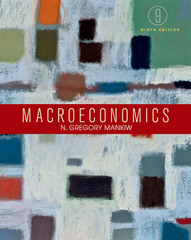Answered step by step
Verified Expert Solution
Question
1 Approved Answer
This question is about insurance when many different losses are possible. An expected utility maximizing individual has initial wealth (W); her utility function for money
This question is about insurance when many different losses are possible. An expected utility maximizing individual has initial wealth \(W\); her utility function for money \(u(\cdot)\) is concave and differentiable. With probability \(\pi\), there is no accident and thus no loss; with probability \(1-\pi\), an accident will occur. If an accident occurs, the possible losses are \((L_1, L_2, \ldots, L_s)\), where each \(L_s > 0\). Let \(\pi_s > 0\) denote the conditional probability that the loss is \(L_s\) given that an accident has occurred, and assume that \(\sum_{s=1}^S \pi_s = 1\). The individual can purchase as many units of insurance as she likes. Each unit costs \(P\) and reimburses the amount \(Z\) in case of an accident and nothing otherwise; therefore, if she purchases \(x\) units, she pays \(xP\) and will receive \(xZ\) in case of an accident and zero if there is no accident. Note that \(Z\) does not depend on \(s\), so the consumer gets the same per unit reimbursement for an accident no matter what loss she incurs. Let \(x^*\) denote the optimal choice of how much insurance to buy; that is, \(x^*\) maximizes this individual's expected utility. rom now on, assume that insurance is actuarially fair so that \(P = (1 - \pi) Z\). Prove that if \(S = 1\) and \(Z = L_1\), then insuring fully (\(x^* = 1\)) is an optimal solution
Step by Step Solution
There are 3 Steps involved in it
Step: 1

Get Instant Access to Expert-Tailored Solutions
See step-by-step solutions with expert insights and AI powered tools for academic success
Step: 2

Step: 3

Ace Your Homework with AI
Get the answers you need in no time with our AI-driven, step-by-step assistance
Get Started


